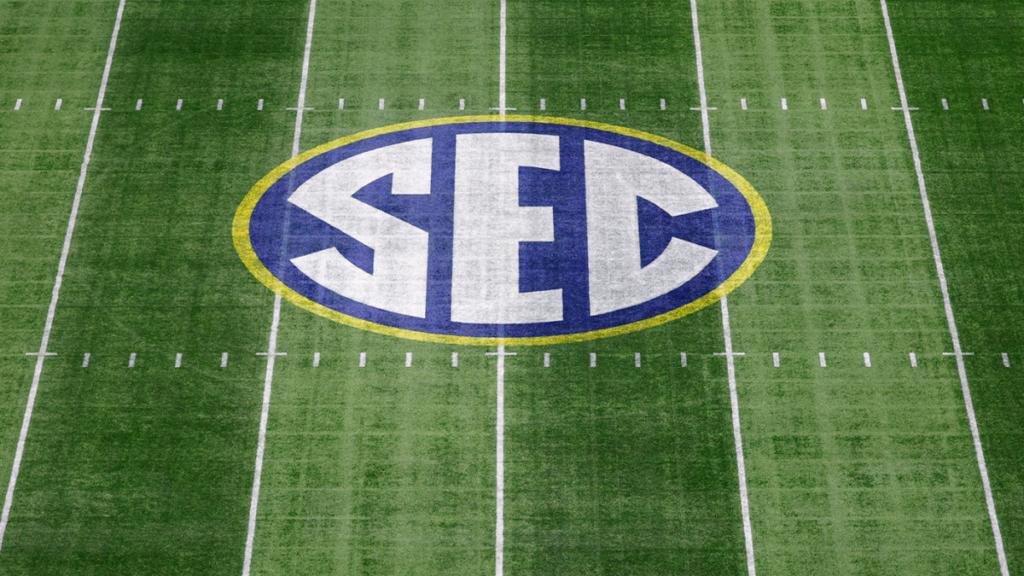The SEC is once again the king of the basketball world, but make no mistake, football is still the South’s one true king.
Florida’s march through the NCAA Tournament was magical. Its 12-game winning streak, which included the most second-half rallies in the last 10 years of March Madness and the 12-point comeback against Houston to win the national title, is the stuff of legend.
In the South, where college football is the No. 1 sport and spring football might be No. 2, the SEC’s dominance on the hardwood has placed more pressure on the conference to deliver on the football field, where it desperately needs to rebound after being shut out of the College Football Playoff the last two years.
College basketball was a nice distraction for the SEC, but soon, the buzz will fade.
A record-breaking 14 teams in the NCAA Tournament? Awesome.
Seven teams in the Sweet 16? Fantastic.
A national champion from the SEC for the first time since 2012? Nice.
But who’s winning the quarterback battle at Alabama? Is Kirby Smart poised to push Georgia back into the title picture? Heck, can Billy Napier turn things around in the shadow of Todd Golden at Florida, where winning seasons have been inexplicably tricky to attain the last several years?
Listen, the SEC’s football product is not in a dire situation, but the conference is losing steam. The Big Ten, which has won back-to-back national titles, has surpassed the SEC as the sport’s thoroughbred and is on pace to widen the gap with Ohio State reloading for another run and Penn State in its best position in 30 years to make history.
Meanwhile, the SEC has failed to reach the national championship in back-to-back years for the first time in 20 years.
The landscape has shifted because of NIL collectives. The richest boosters reside in the North, not the South, and the Big Ten has proven to have the deepest pockets, drawing talent away from the likes of Alabama to build Dream Team rosters capable of winning titles year after year. The question is whether that is sustainable now that revenue sharing is entering the chat. Some contemplate parity could be in play for the first time in the modern era as the playing field levels with $20.5 million salary caps and NIL transitioning from hardly disguised pay-for-play schemes into a proper marketing arm, providing payments reflecting something more akin to fair market value.
House v. NCAA settlement: Approval awaits in landmark case as judge digs in on roster limits
Brandon Marcello
Perhaps the days of one conference claiming a decade of dominance are over because of the new revenue-sharing model. The SEC had its run in the 2010s, winning five national titles in six years. The Big Ten’s two-year reign might also only be a blip. We’ll see.
Still, in this new age, it’s clear the SEC is in a period of transition. Leadership needs to pivot. The conference needs some fire.
The SEC has some of the smartest and creative minds in college athletics. Commissioner Greg Sankey has overseen the most lucrative and prosperous era in the conference’s history. He has navigated every obstacle with aplomb, strengthening sports and lining pockets, strongarming fundamental changes in national tournaments and playoff structures, strengthening his conference … all while making a few enemies along the way.
As easy as it is to label the SEC as a villain as it seeks to tweak changes in the College Football Playoff and NCAA Tournament, the conference is at its best when it focuses inward on its problems.
Consider one of Sankey’s first actions when he was named commissioner in 2016. The conference’s basketball product was a disaster, placing only three teams in the NCAA Tournament three times in the four years before Sankey’s elevation to boss. Nine years later, the SEC sent a record-breaking 14 teams to the NCAA Tournament and earned a record $70 million in payouts for its success in the postseason.
The dramatic turn was sparked by Sankey, who hired former Big East commissioner Mike Tranghese as a consultant just a few months after taking over the SEC. No stranger to success in basketball, Tranghese helped transform the SEC into a basketball power by simply motivating coaches and administrators – and listening to their concerns on officiating, recruiting and resources – before enacting a plan to capitalize on the schools’ immense traditions and recruiting footprint (and football success) to propel basketball into the next decade.
It’s never easy, but Tranghese and Sankey’s simplicity helped pave the way for a historic turnaround. The SEC averaged only 4.4 NCAA Tournament bids per year before 2018, but that number has since jumped to 8.1. SEC teams have comprised at least 20% of the 68-team field in five of the last six years, an average matched only by the Big Ten over the previous 20 years.
Football is not in the dumps, but the conference is at a potential turning point. How it navigates these next few years is paramount to whether the conference can again supplant the Big Ten as the kings of the sport. At least publicly, the SEC has focused more on expanding the CFP to 14 teams and giving the SEC more automatic bids than it has on renovating its own house.
SEC football could best be served by focusing on itself rather than trying to fix a complex, national system to mirror its image.
Read the full article here


